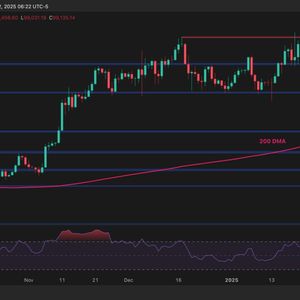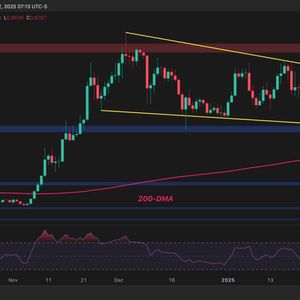In a significant step toward mainstream crypto adoption, Craig Bowser , a U.S. Senator from Kansas, has introduced a bill aimed at allowing up to 10% of public employees’ retirement funds to be invested in spot Bitcoin ETFs . The proposed legislation, reported by Cointelegraph on X, highlights growing recognition of Bitcoin as a viable asset class for institutional portfolios. If passed, this bill could pave the way for public pension funds to benefit from the long-term potential of Bitcoin, adding diversification and a hedge against inflation to their investment strategies. To learn more about the innovative startups shaping the future of the crypto industry, explore our article on the latest news, where we delve into the most promising ventures and their potential. Key Highlights of the Proposed Bill Investment Limit The bill caps Bitcoin ETF investments at 10% of the total public employees’ retirement fund to mitigate risk while promoting diversification. Focus on Spot Bitcoin ETFs Unlike futures-based ETFs, spot Bitcoin ETFs directly track Bitcoin’s price, offering more accurate exposure to the cryptocurrency. Regulatory Oversight The bill emphasizes compliance with U.S. securities laws to ensure transparency and investor protection. Why This Matters for Public Employees The proposal reflects an increasing acknowledgment of Bitcoin’s role in modern investment strategies: Portfolio Diversification : Adding Bitcoin ETFs provides exposure to an asset class that is uncorrelated with traditional markets. Inflation Hedge : Bitcoin’s limited supply makes it an attractive hedge against fiat currency devaluation. Potential for Growth : Long-term appreciation in Bitcoin’s value could significantly enhance pension fund returns. Growing Acceptance of Bitcoin in Institutional Portfolios The introduction of this bill aligns with broader trends in institutional crypto adoption: ETFs Gain Traction Spot Bitcoin ETFs have seen increasing demand globally, with several applications pending approval in the U.S. Countries like Canada and Europe already offer spot Bitcoin ETFs, setting a precedent for adoption. Institutional Endorsements Major financial firms, including BlackRock and Fidelity, are actively pursuing Bitcoin ETFs, signaling confidence in the asset’s future. Regulatory Progress U.S. regulatory agencies are gradually providing clearer guidelines for crypto investments, encouraging adoption by public funds. Potential Risks and Mitigation While the proposed bill offers significant opportunities, it also acknowledges inherent risks: Volatility : Bitcoin’s price fluctuations could impact portfolio stability. The 10% cap minimizes this risk. Regulatory Uncertainty : Pending decisions on spot Bitcoin ETF approvals could delay implementation. Public Opinion : Skepticism about Bitcoin among policymakers and the public may influence the bill’s reception. Impact on the Crypto Ecosystem If approved, the bill could have far-reaching effects: Increased Legitimacy Public pension fund investments would solidify Bitcoin’s status as a mainstream financial asset. Boosted Adoption Institutional participation could inspire confidence among retail investors and smaller institutions. Market Growth Significant inflows into Bitcoin ETFs could drive price appreciation and market capitalization growth. Conclusion Senator Craig Bowser’s bill to allocate up to 10% of public employees’ retirement funds to spot Bitcoin ETFs represents a landmark moment in cryptocurrency adoption. By incorporating Bitcoin into traditional pension strategies, the legislation underscores the growing acceptance of digital assets as a legitimate investment option. While challenges like regulatory uncertainty and market volatility remain, this initiative could significantly influence Bitcoin’s adoption by institutional investors, fostering long-term growth and stability in the cryptocurrency market. To learn more about the innovative startups shaping the future of the crypto industry, explore our article on the latest news, where we delve into the most promising ventures and their potential. FAQs What does Senator Craig Bowser’s proposed bill aim to do? The bill proposes allowing up to 10% of public employees’ retirement funds to be invested in spot Bitcoin ETFs. Why focus on spot Bitcoin ETFs? Spot Bitcoin ETFs directly track Bitcoin’s price, offering more accurate exposure compared to futures-based ETFs. What are the benefits of investing public funds in Bitcoin ETFs? Benefits include portfolio diversification, an inflation hedge, and the potential for long-term value appreciation. What are the risks of investing in Bitcoin ETFs? Risks include price volatility, regulatory uncertainty, and public skepticism about cryptocurrency investments. How could this bill impact the crypto market? The bill could boost Bitcoin’s legitimacy, adoption, and market growth by encouraging institutional participation. What safeguards are in place in the proposed bill? The bill caps Bitcoin ETF investments at 10% of the fund and emphasizes compliance with U.S. securities laws to protect investors. To learn more about the innovative startups shaping the future of the crypto industry, explore our article on latest news , where we delve into the most promising ventures and their potential to disrupt traditional industries.




















